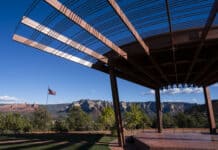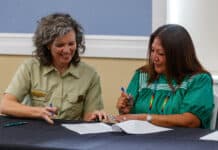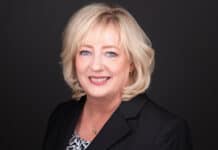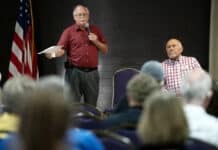The challenge the city of Sedona and the Sedona Chamber of Commerce and Tourism Bureau face year in and year out is: How do you balance the needs of residents with those of tourism, which sustains the city?
According to Vice Mayor John Martinez, one of the first steps in doing so is to trust experts and avoid looking at everything under a microscope.
“We have some big dollars we’re going to be spending in the upcoming years and how are we going to be able to fund all of it?” he asked. “It’s through a vibrant economy. And you’re not going to get that vibrant economy by cutting the marketing budget. When the competition is spending more money to attract visitors, you don’t cut back. You have to stay in there and slug it out with all the other competition.”
Martinez’s comments came during the Sedona City Council’s meeting Tuesday, May 28, in which the chamber’s destination services plan, plan of work, contract and preliminary FY20 budget were discussed. Part of that discussion — which was requested by Councilmen John Currivan and Bill Chisholm — centered around whether or not the chamber should again reduce its advertising budget.
“It’s not our job to micromanage,” Martinez said, adding that he trusts the expertise of the chamber staff. “It would be disastrous for us as a city, with the economy we need and the projects we have in the future, to try and cut back on marketing.”
The agenda item was only for discussion. After two hours of talks, the majority of the council was in favor of keeping the chamber’s budget the same as it was presented.
Mayor Sandy Moriarty echoed Martinez’s words that with the Sedona in Motion projects beginning next week, as well as road work later this summer in Oak Creek Canyon, it’s not time to cut back on advertising.
“There are a couple of things I keep hearing that disturbs me,” Moriarty said. “One is that there seems to be an attitude among many that it’s residents against the chamber and that ‘They only want it because it’s good for the chamber and not good for us as residents.’ It’s not true.
“We hear it, too, that the city does it out of greed and that we’re not looking out for the residents. The residents were mostly tourists at one point and now they want to get rid of the tourists. Like it or not, it’s our economy and it always will be.”
At a January joint meeting between the council and the chamber board of directors, the parties agreed to submit and consider a budget that is built from the ground up rather than built from the estimated 55% of bed tax. It’s also designed to sustain but not to grow existing levels of tourism.
Then, in late April, council generally expressed support for the chamber’s proposed upcoming budget of $2,492,500. This is $130,500 less than the projected 55% of bed tax for FY20. The $2,492,500 draft budget represents a $316,100 increase from the current of $2,176,400, which was also reduced from the estimated 55% of bed tax for that year.
“SCC&TB proposed allocating $1,179,950 of the total budget to attracting tourists — generally captured in the quality of the economy program,” a city report states.
“Perhaps the most difficult task is speculating about whether the dollars allocated to that program need to be sustained, increased or reduced to accomplish sustaining, but not growing, existing levels of tourism. While there is strong evidence of the positive impact SCC&TB marketing efforts have had on economic growth, it is not clear exactly how small adjustments might impact things.”
Chamber President and CEO Jennifer Wesselhoff said that after taking last summer off, they will again advertise this summer in Phoenix and will spend $155,000 total for summer and winter in the area. Another $75,000 will be spent this summer advertising in Los Angeles and $75,000 in this winter in Chicago.
“I don’t think we can cut any more,” she said.
All those who spoke during public comment did so in favor of the chamber, including Stan Kantowski, managing director of Enchantment Resort. He said that even though the resort is outside the city limits, what the city does impacts them and vice versa.
“When I was in Palm Springs, we had a similar conversation and we stopped advertising,” he said. “Business went to San Diego, to Las Vegas and to Arizona. It took about three years to get those clients back. We can’t look at what we have today but what can happen tomorrow.”
Ron Eland can be reached at 282-7795, ext. 122 or by email at reland@larsonnewspapers.com






















